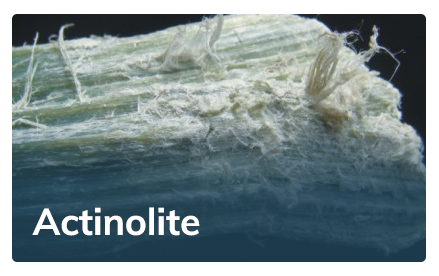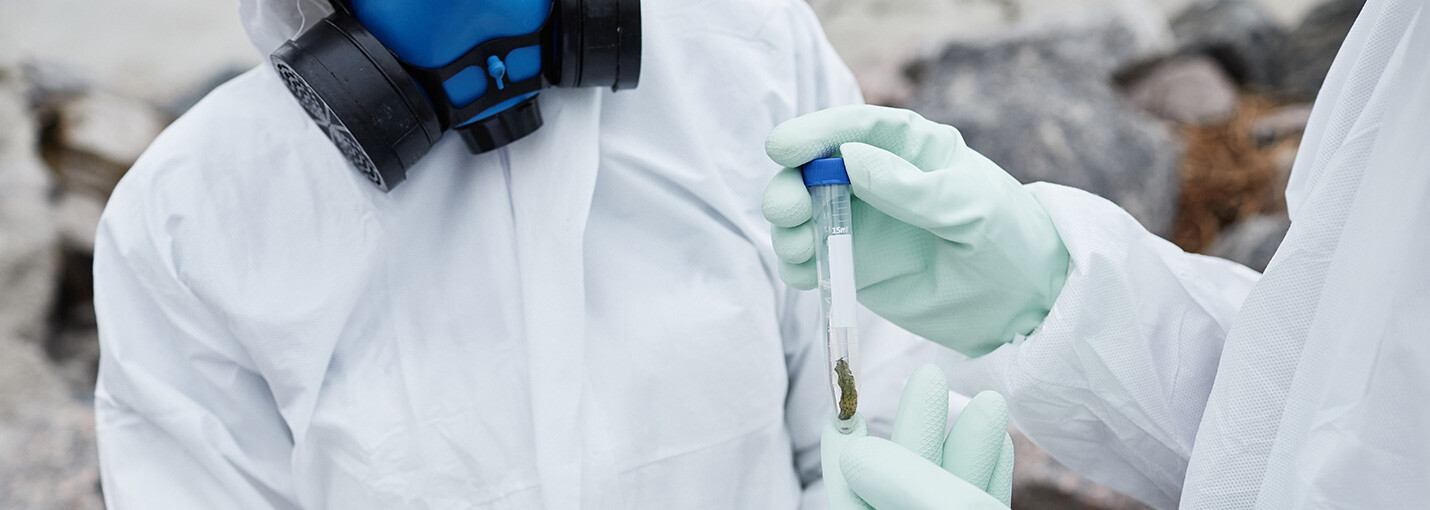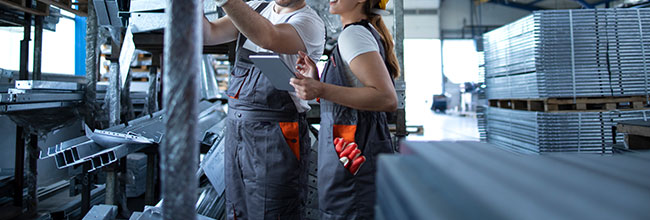What Does Asbestos Dust Look Like?
Asbestos dust is an extremely hazardous material that can have severe health consequences when inhaled or ingested. This naturally occurring mineral was once widely used in construction and other industries due to its highly effective heat-resistant and insulating properties.
However, after decades of atrocious negligence on the part of many industry executives and even some medical professionals, the dangers of exposure to asbestos became widely understood.
!
If you believe that you were exposed to asbestos, even as a child, speak to a healthcare provider about tests and screening to help diagnose lung-scarring and screen for asbestos-related diseases.
Types of asbestos
Asbestos naturally occurs in several different forms, including chrysotile, amosite, crocidolite, tremolite, anthophyllite, and actinolite.
Chrysotile (also known as white asbestos) is the most common form of asbestos. It is white or yellow-green in color and has a flexible, curly fibrous structure.
Amosite (also known as brown asbestos) is a darker color and has a straighter, stiffer fiber structure.
| Chrysotile | Crocidolite | Amosite | Anthophyllite | Actinolite | Tremolite |
 |  |  |  |  |  |
Crocidolite (also called blue asbestos) is a deep blue color and has a fine, needle-like fiber structure.
Tremolite, anthophyllite, and actinolite are less common forms of asbestos but can still pose a health risk when inhaled.
“All forms of asbestos are carcinogenic to humans.” 1
Microscopic fibers
Despite the different appearances of these asbestos varieties, it’s important to note that individual asbestos fibers are microscopic and cannot be seen with the naked eye. When asbestos-containing materials are disturbed, such as during construction or demolition activities, the fibers can become airborne and collectively form an asbestos dust. This dust can be inhaled and become trapped in the lungs, leading to a range of health issues, typically taking many years to develop.
Asbestos has no taste or smell.
You may not know you’re breathing it.

Asbestos fibers are often microscopic and only the larger ones can be seen as dust.
When viewed under a microscope, asbestos dust appears as long, thin, and sharp fibers. It’s hard to imagine, but these fibers are much smaller than a human hair, with a diameter of around 0.02 to 0.03 micron. To put these minute measurements into some perspective, a micron is equal to one-millionth of a meter (or one thousandth of a millimeter). Due to their minute size, asbestos fibers can easily penetrate the respiratory system and become lodged in the lungs.
Once inside the lungs, these nasty fibers can cause inflammation, scarring, and potentially fatal diseases such as mesothelioma (a rare and aggressive form of cancer) and asbestosis.
“Some asbestos fibers may bypass…your body’s natural defenses…and lodge deep within your lungs. Those fibers can remain in place for a very long time and may never be removed.”Source: American Lung Association |

Asbestos in the lungs
Once in the lungs, asbestos dust can present in a range of ways, and this depends on the stage and severity of the disease caused by their inhalation. In the early stages of exposure, asbestos fibers may appear as small, thin, and straight fibers and are usually less than just 5 microns in length. These fibers can be easily inhaled and penetrate deep into the lung tissue, causing inflammation and scarring.
“The overall evidence suggests there is no safe level of asbestos exposure.”Source: National Cancer Institute (NIH)2 |
After several decades, asbestos fibers in the body cause health problems, including cancer.
In the later stages of asbestos-related diseases, the appearance of asbestos dust in the lungs can be rather more pronounced. Asbestosis, for example, can cause the lungs to become stiff and fibrous, with white or gray patches of scar tissue visible on X-rays or CT scans. The asbestos fibers in the lungs can also cause small nodules or masses to form, which can also be picked up with imaging studies.
“Generally, those who develop asbestos-related diseases show no signs of illness for a long time after exposure.”Source: National Cancer Institute (NIH)3 |
Cleaning up asbestos dust
The bottom line is – don’t ever do it yourself. In America, Australia, Canada, and a host of other countries, the handling and disposal of asbestos-containing materials are strictly regulated by law. These regulations stipulate that any work involving asbestos-containing materials be carried out by licensed professionals equipped with all of the necessary training and equipment to handle and dispose of the material in the safest possible way.
The importance of using a pro for asbestos abatement and removal
Attempting to clean up asbestos yourself can put you and others at risk of exposure, and these risks are simply not worth the devastating outcomes that can eventuate. Even a small amount of asbestos dust can be hazardous, and proper protective equipment and procedures are necessary to ensure safe handling and disposal.
It’s crucial to inspect your home or workplace for asbestos-containing materials with the help of a professional if you suspect their presence. If found, it’s important to take precautions to minimize exposure to asbestos dust during any removal or repair work, and ensure proper disposal of the materials.
People who worked in these industries prior the mid-1980s have a higher risk of developing asbestos-related diseases:
| Construction | Factories | Foundries | Refineries | Shipyards | Mining / Milling |
| Demolition | Insulation | Steelworkers | Pipe Fitting | Shipbuilding | Mechanics |
 |  |  | |||
| Roofing | Textiles | Iron workers | Boilers | Firefighting | Brake Repair |
| Flooring | Cement | Electricians | Gasket Repair | Railroad | HVAC |
Unfortunately so do their families.
Who is at risk of asbestos exposure?
Exposure on the job (occupational asbestos exposure) is the most common source of asbestos-related diseases.
Certain industries, such as construction, mining, and manufacturing, typically expose workers to considerably higher risks of asbestos exposure. That said, the threat most certainly isn’t limited to these industries. Everyone is at risk of asbestos dust exposure if they encounter materials containing it in their home or workplace.
Do You Qualify For Compensation?
Quickly and easily find out how you were exposed by searching W.A.R.D., the largest asbestos database on the planet.
FREE SEARCH >Many industrial workers were not given proper protective equipment and procedures to prevent harmful asbestos exposure.
Knowing the risks of asbestos is key to protecting yourself and others. Always take the most cautious steps to guard against this hazardous material and never take it lightly.
Second-hand asbestos exposure (Secondary Asbestos Exposure)
Even the workers’ families were affected due to secondhand exposure—asbestos fibers are extremely durable and can cling to skin and clothing, traveling great distances with those directly exposed.
Unfortunately, many workers’ families and other household members were exposed to asbestos as well, as asbestos was brought home daily in neighborhoods across the U.S. on work-clothing.
This is often known as secondary or second-hand asbestos exposure (or domestic / household family asbestos exposure). In studies of asbestos disease, 1 in 5 cases of asbestos exposure were caused by secondary asbestos exposure.4
Sharing a home or vehicle with someone wearing asbestos-tainted clothing puts you at risk of asbestos-related diseases.5
But spouses and children can also receive a share of the $30 Billion in asbestos trust compensation if they were exposed to asbestos brought into the house or family vehicle by a worker.
Over $30 Billion is still available (No lawsuit. No fees unless you receive money. No risk.) Stake your claim.  |
If you have been exposed to asbestos dust, don’t wait to get help. Visit your doctor immediately and undergo a chest x-ray or CT scan to determine whether there are any identifiable lung abnormalities. Early detection of asbestos-related diseases can help slow the progression of the illness and improve your overall health.
AsbestosClaims.Law
Asbestos claims aren’t just a day in the office for Justinian C. Lane.
They’re a mission.
In the past, workers exposed to asbestos were kept in the dark about the dangers of asbestos exposure. Among those workers were Justinian’s grandparents and his own father.
Unfortunately, they were also kept in the dark about the compensation options available to them, such as asbestos lawsuits and trust funds. In their later years, they died from asbestos-related cancers.
Because no one in Justinian’s family knew their options, they never received any compensation for the death of their loved ones.
Today, we’re working to turn the tide.
Significant compensation may be available to you if you have contracted an asbestos-related illness or injury. This includes workers as well as family members who have been exposed.
Compensation is your key to receiving the medical treatment you need, funding asbestos removal services, and maintaining your physical well-being.
Want to know one of the quickest and easiest ways to receive compensation? Let us talk to you about asbestos trust claims. This option can often avoid lawsuits altogether.
We want to hear your story, and more importantly, we want to bring redemption to it.
Need help filing a claim? No problem, you can email us at [email protected].
Would you rather talk over the phone? Simply call or text us, at (206) 455-9190.
You won’t pay a penny to us unless you receive money first, so there’s no risk.
In addition to legal claims, veterans disability, social security and employment protection like workers compensation, FELA and The Jones Act for maritime workers, there are asbestos trusts that have been set up to compensate those harmed by asbestos without having to file a lawsuit.
The dangers of asbestos used to be an industry-guarded secret kept from suffering people like Justinian’s family. Not anymore. We’re bringing you the truth.
We’ve created numerous resources to help answer your questions and empower you with the information you need to know and act on.
Our website has a wealth of information dedicated to things like health and safety, asbestos testing, asbestos removal, and legal information about compensation for asbestos injuries.
Are you a visual learner? No problem!
Our YouTube page has infographics, an asbestos history series, and other helpful resources for you to check out!
| Not sure where or when you were exposed to asbestos? Let W.A.R.D. help you! The Worldwide Asbestos Research Database (W.A.R.D) is the largest asbestos information database, period. If you need answers related to specific locations, products, or what type of compensation may be available to you due to asbestos exposure, W.A.R.D. is the place to start. |
Working with us is risk-free. Unless you receive compensation money, there are NO FEES! Speak to us about asbestos litigation today.
1 IARC Working Group on the Evaluation of Carcinogenic Risks to Humans. Arsenic, metals, fibres, and dusts. IARC Monographs on the Evaluation of Carcinogenic Risks to Humans. 2012 ;100(Pt C):11-465. PMID: 23189751.
2 National Cancer Institute (NIH), Asbestos Fact Sheet.
3 National Cancer Institute (NIH), Asbestos Fact Sheet.
4 Tompa E, Kalcevich C, McLeod C, Lebeau M, Song C, McLeod K, et al. The economic burden of lung cancer and mesothelioma due to occupational and para-occupational asbestos exposure. Occup Environ Med 2017; 74: 816-22.
5 Anua, S.M., Semple, S., Shakri, S.F.M., Safuan, S., Mazlan, N. and Asri, A.A.M., 2019. A review of the take-home exposure pathway of workplace hazards. International Journal of Medical Toxicology & Legal Medicine, 22(3and4), pp.13-19.